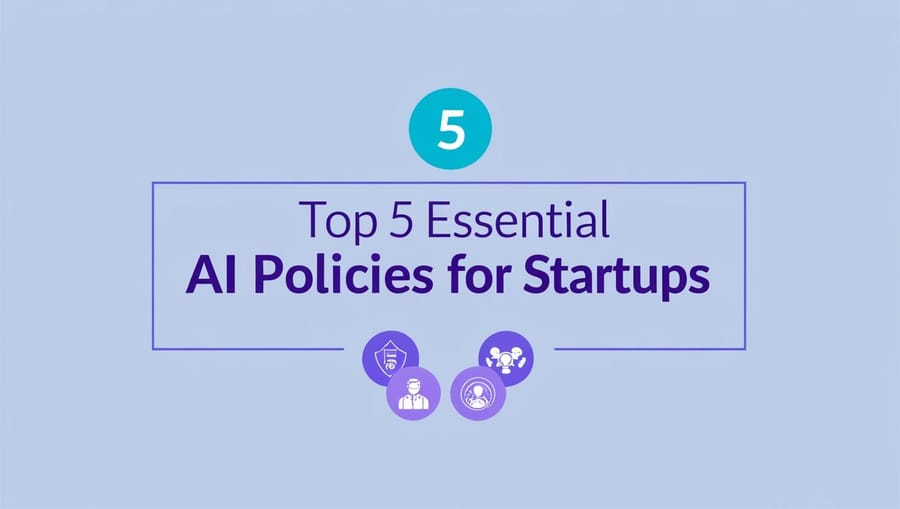Transparency as Trust — Publishing Your Patient-Facing AI Factsheet
More than half of consumers expect AI to enhance their healthcare experience within the next 12 months—but only if they understand how it works. Regulators share this view and are increasingly mandating transparency:
- EU AI Act (Art. 13): Requires AI providers to give users clear instructions to “appropriately interpret and use the system’s output.”
- NIST AI RMF: Calls for policies that “enhance the explanation, interpretation, and overall transparency of AI systems.”
- ISO 42001: Positions transparency as a cornerstone of an AI management system.
A public AI factsheet—your algorithm’s “nutrition label”—meets these demands and closes the trust gap before audits and buyers arrive.
What Goes Into an AI Factsheet?
An AI factsheet is a clear, structured document that summarizes the essential facts about an AI model or service for a wide range of stakeholders—including clinicians, patients, administrators, and regulators. Its purpose is to increase transparency, trust, and accountability by providing easily understandable information about how an AI system was developed, how it works, and how it should be used.
Here are the core elements that should be included in an effective AI factsheet:
| Section | Description |
|---|---|
| Purpose & Intended Use | Plain-language summary of what the AI does, its intended users, and clinical or operational context. |
| Limitations | Clear explanation of what the AI does not do, including boundaries and scenarios where it should not be used. |
| Data Sources & Management | Origin of data, collection methods, data quality, representativeness, retention, and de-identification steps. |
| Model Performance & Limits | Key metrics (accuracy, sensitivity, specificity), known biases, edge cases, and human-override policies. |
| Explainability & Transparency | How the AI makes decisions, available explanations or visualizations, and interpretability for users. |
| Privacy & Security | Details on data protection, encryption, compliance (e.g., HIPAA/GDPR), and third-party data sharing. |
| User Rights & Choices | How users can ask questions, request human review, opt out, or provide feedback. |
| Lifecycle & Maintenance | Model update frequency, retraining processes, audit and monitoring practices, and notification of changes. |
Aim for one scroll or a single-page PDF—patients read it, regulators bookmark it.
Real-World Scenarios in Action
1. Radiology Triage – “SmartScan”
- Factsheet highlight: “SmartScan flags ~8% of chest X-rays for urgent human review; radiologists remain the final decision-makers.”
- Impact: Radiologists reduced turnaround time by 27%, while malpractice insurers cited the factsheet in risk-rating discounts.
2. Diabetes Management App – “GlucoGuide”
- Factsheet snippet: “Uses de-identified CGM data; models are retrained monthly, never sharing raw readings with third parties.”
- Impact: A regional hospital network approved the app two weeks faster because the transparency statement matched its data-sharing policy.
3. Mental-Health Chatbot – “MoodMate”
- Factsheet snippet: “Chatbot provides coping strategies, not clinical diagnoses. Users can escalate to a licensed therapist at any time.”
- Impact: Support tickets claiming the bot “over-promised therapy” fell 45% after launch of the factsheet.
4. Revenue-Cycle AI – “BillSafe”
- Factsheet snippet: “BillSafe predicts coding errors; 0.3% false-positive rate. All disputed claims automatically route to a human biller.”
- Impact: Payer audits dropped by 18% in six months; CFO now cites the factsheet during insurer negotiations.
How AI Healthtech Startups Can Implement Patient-Facing AI Factsheets
Adopting patient-facing AI factsheets is more than a regulatory requirement—it’s a strategic move that builds trust, streamlines adoption, and demonstrates your commitment to ethical, patient-centered innovation.
Here’s a step-by-step roadmap for startups ready to lead the way:
1. Embed Transparency from the Start
- Design with Transparency in Mind: Integrate transparency as a core product value from ideation to deployment. Document data sources, model limitations, and intended use cases in clear, accessible language.
- Plain Language First: Ensure all factsheet content is understandable at a sixth-grade reading level, avoiding technical jargon.
2. Collaborate with Healthcare Stakeholders
- Co-Create with End Users: Involve clinicians, compliance teams, and patient advocates in drafting and reviewing factsheets to ensure real-world relevance and clarity.
- Iterate with Feedback: Pilot the factsheet with a small group of users, gather feedback, and refine before broader rollout.
3. Integrate Factsheets into Clinical Workflows
- Easy Access: Make factsheets available at the point of care—integrate them into EHRs, patient portals, or mobile apps so clinicians and patients can access them effortlessly.
- Support Informed Consent: Use factsheets as part of the patient consent process, ensuring patients know when and how AI is involved in their care.
4. Educate and Empower
- Training for Clinicians and Staff: Provide onboarding and ongoing training to help staff interpret and communicate factsheet information to patients.
- Patient Empowerment: Clearly outline how patients can ask questions, request human review, or opt out of AI-driven decisions.
5. Monitor, Measure, and Improve
- Track Key Metrics: Monitor factsheet usage, patient understanding, and feedback. Use this data to drive continuous improvement.
- Continuous Updates: Review and update factsheets regularly to reflect changes in AI models, data sources, or regulatory requirements.
6. Demonstrate Compliance and Build Trust
- Regulatory Mapping: Align factsheet content with relevant regulations (EU AI Act, NIST AI RMF, ISO 42001) to help healthcare partners meet audit and compliance needs.
- Showcase Commitment: Highlight your transparency efforts in sales, partnership discussions, and marketing to differentiate your solution.
7. Scale Across Care Settings
- Beyond Hospitals: Ensure your factsheets are adaptable for use in clinics, telehealth, home care, and consumer health apps—wherever your AI is deployed.
By following this practical roadmap, AI healthtech startups can seamlessly implement patient-facing AI factsheets, support healthcare partners, and foster a culture of trust and transparency that benefits patients, providers, and the entire healthcare ecosystem.
A 1-Week Factsheet Blueprint
Day 1 — Draft
- List every patient-touching AI use case.
- Write sixth-grade-level descriptions—no jargon.
Day 2 — Validate
- Clinical lead confirms medical claims.
- Privacy officer vets data statements.
- Map each section to EU AI Act Art. 13 + NIST “Transparency” controls.
Day 3 — Design & Host
- Convert to single-page HTML or PDF inside your Trust Center.
- Link opt-out and incident-report forms; add ALT text for accessibility.
Day 4 — Publish & Measure
- KPIs to track day 1:
- Patient understanding (% respondents who say they grasp the AI’s role; target ≥ 90%).
- Transparency tickets (inquiries/complaints per 1,000 interactions).
- Review metrics at every model update.
Practical Tips
1. Emphasize Human Oversight
- Highlight when clinicians remain the final decision-makers.
- Use bold callouts or icons to reassure users about safety and accountability.
2. Detail Data Handling and Privacy
- Be explicit about data de-identification, retention, and third-party sharing.
- Consider adding simple data flow diagrams or FAQs for clarity.
3. Set Clear Boundaries for AI Advice
- Clearly state what the AI can and cannot do, and provide easy escalation options.
- Include prominent “Request Human Help” links or buttons.
4. Quantify Performance and Error Handling
- Share relatable accuracy rates and explain human review processes for errors.
- Use simple statistics like “3 in 1,000 claims may be flagged incorrectly.”
5. Match Transparency to Stakeholder Needs
- Tailor language and detail for patients, clinicians, payers, and auditors.
- Establish feedback loops for continuous improvement.
6. Track and Respond to Feedback
- Monitor patient understanding and complaints post-launch.
- Add feedback forms or surveys directly on the factsheet page.
Common Pitfalls to Avoid
Even with the best intentions, transparency efforts can falter if these common mistakes aren’t addressed:
- Drowning in Legalese: Overly complex or legalistic language can alienate patients and undermine trust. Strive for clarity and simplicity—patients should feel informed, not intimidated.
- Treating Transparency as a One-Time Task: Transparency isn’t a “set it and forget it” exercise. Factsheets and communication should evolve alongside your AI models and regulatory landscape.
- Overlooking Stakeholder Feedback: Failing to listen to patients, clinicians, and administrators can lead to blind spots and missed opportunities for improvement. Make feedback collection and response a core part of your process.
- Neglecting Accessibility: Factsheets that aren’t accessible to people with disabilities or non-native speakers can create barriers to understanding. Prioritize inclusivity in both language and design.
- Ignoring Real-World Usage: If your factsheet doesn’t reflect how your AI is actually used in practice, it risks being ignored or, worse, misleading. Regularly review and update content based on real-world deployment.
Future-Proofing Your Transparency Strategy
The landscape of AI governance is rapidly evolving. Here’s how to stay ahead:
- Prepare for Public Reporting: Regulators are piloting public dashboards that display live AI safety and performance metrics. By investing in clear, up-to-date factsheets now, you’ll have the foundational content and processes needed to meet future public reporting requirements—saving time, cost, and stress later.
- Build for Scalability: Design your transparency practices so they can easily adapt to new regulations, technologies, and care settings. Modular factsheets and automated update workflows will help you scale as your AI portfolio grows.
- Position Transparency as a Differentiator: Don’t just meet the minimum—make transparency a hallmark of your brand. Proactive, patient-centered communication can set you apart in a crowded market and foster long-term loyalty from both healthcare partners and patients.
- Commit to Continuous Learning: Stay engaged with emerging standards, best practices, and stakeholder expectations. Regularly audit your transparency efforts and incorporate lessons learned to keep your strategy robust and relevant.
By avoiding common pitfalls and proactively future-proofing your transparency strategy, you’ll not only meet today’s requirements but also build the trust, agility, and resilience needed to thrive in tomorrow’s healthcare AI ecosystem.






